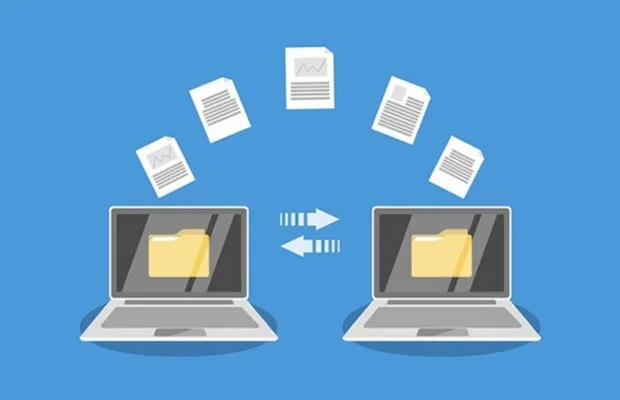what to do if data is lost during a transfer between devices.
July 15, 2025
Transferring data - whether you’re moving photos from your phone to your computer, sharing files between workstations, or migrating content to a new device - has become routine, yet data loss can still occur during the process.
Losing files mid-transfer can feel catastrophic, but rapid, methodical action can rescue most or all of your data. Here’s a guide on what to do to maximise recovery success and prevent repeat incidents.
1. Freeze activity immediately
First and foremost, do not panic. Data loss can be stressful, but hasty actions can sometimes make the situation worse.
The moment you notice missing files, stop all writes, downloads, installs, or saves on both the source and destination devices. Every new write can overwrite the sectors where your missing data still resides, making recovery more difficult or even impossible.
Assess the situation and determine what data was lost and from which devices.
2. Verify the obvious first
Check the Recycle Bin / Trash or “Recently Deleted” folders.
Search both devices for unexpected locations or duplicate copies - sometimes files land in an unexpected path.
3. Check for backups
Before diving into complex recovery methods, check if you have any recent backups of the lost data. Many devices and cloud services automatically create backups, which can be a lifesaver in such situations.How to Check for Backups:
Cloud Services: Check your cloud storage services like Google Drive, iCloud, or OneDrive.
Local Backups: Look for local backups on external hard drives, USB sticks, or other storage media.
System Backups: Check if your operating system has any recent system restore points or backups.
4. Create a full drive clone
If the data is irreplaceable, the safest first step is to create a sector-by-sector clone of the entire source drive before you run any recovery scans or repairs and perform all recovery work on that copy. The original drive stays untouched.
If a recovery attempt crashes or you choose the wrong options, you can create a fresh clone from the unchanged original and try again.
5. Use data recovery software
If you don't have a backup, data recovery software can often retrieve lost files. These tools scan your devices for recoverable data and can be highly effective if used promptly - before additional writes overwrite the missing data.
Tips for software success:
Install the tool on a different drive than the one you’re trying to salvage.
Start with a quick scan; escalate to “deep” or “signature” scans only if needed.
Export recovered files to a third drive to avoid overwriting late-found fragments.
Software‑based retrieval works best for purely logical (non‑hardware) issues.
6. Engage a professional data recovery service
If the drive clicks, grinds, or fails to spin, if you dropped the device or it got wet, if there are logical mishaps, or encrypted data you need to engage data recovery professionals.
They have specialised equipment, clean‑room facilities, and firmware‑level tools and expertise that consumer software can’t match.
Acting within 48 hours raises the recovery rate dramatically.
7. Prevent future incidents
Take steps to prevent future data loss. Implementing a robust backup strategy is crucial.
Regular Backups: Schedule regular backups to cloud services and external storage devices.
Verify Transfers: Always verify that files have been transferred correctly before deleting them from the source device.
Use Reliable Software: Ensure you are using reputable software and methods for data transfers.
Avoid Interruptions: Make sure the devices are fully charged or connected to a power source during transfers to avoid interruptions.
8. Learn from the experience
As much as data loss can be a daunting experience, it can also serve as a valuable learning opportunity. Use this opportunity to improve your data management practices and educate yourself about the latest tools and methods for data protection.
Remember, the key to data security is vigilance and preparedness.
If you need professional help, Kotar Data Recovery's experienced engineers leverage 25 years of expertise and perform all work in‑house, using proprietary tools and solutions to maximize your chances of a full, secure recovery.

